Botanical name : Sicyos edulis
Synonyms : Sechium edule, Chayota edulis
Common name : Chayote, Choko, Mirliton
Easy or Intermediate difficulty for seed saving
Lifecycle: Perennial in warm zones, shorter lived in cool zones
Pollination: Insect pollinated
Mating system: Monoecious with separate flowers for pollen production and fruiting. Self-fertile
Suggested spacing: Same as for eating production
Seed specific requirements: None
Isolation distance: 250 m if saving a specific variety
Population size: 5 or more plants
Seed maturity: A whole mature fruit is treated as a seed
Processing method: None
Expected seed viability: < 1 year
Images
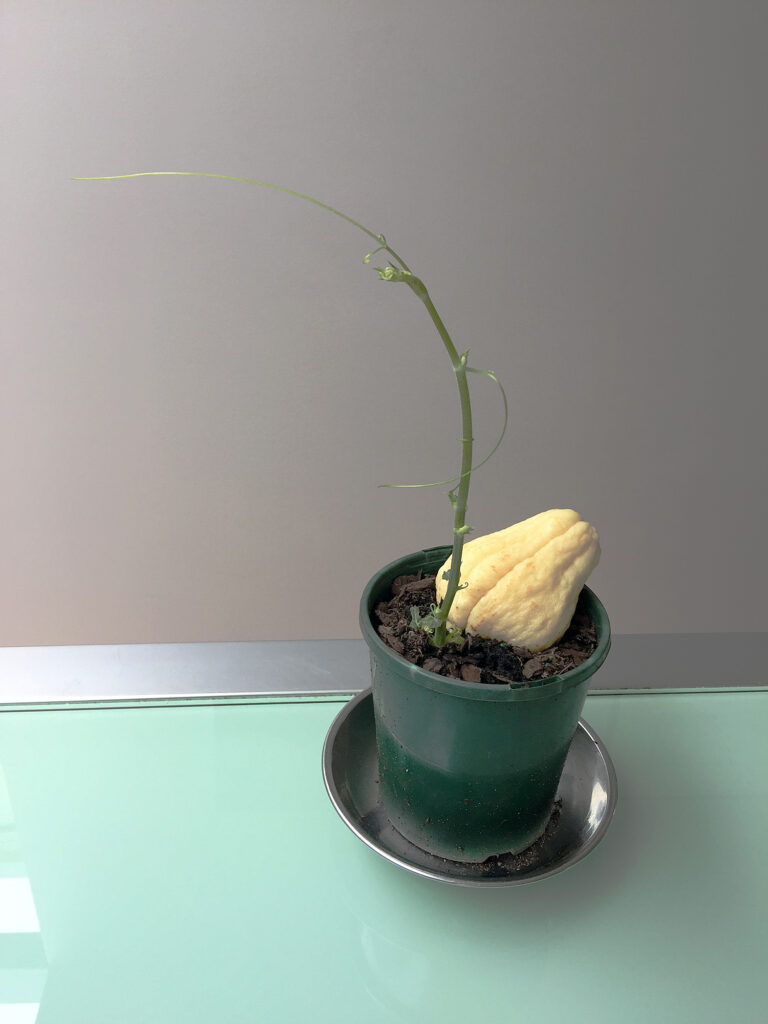
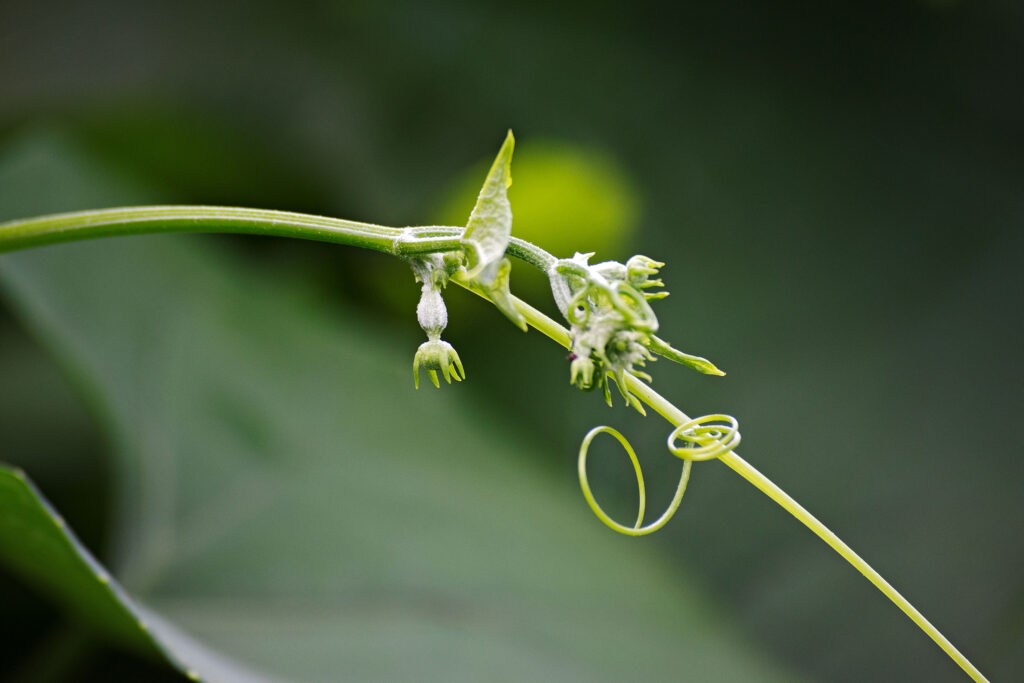
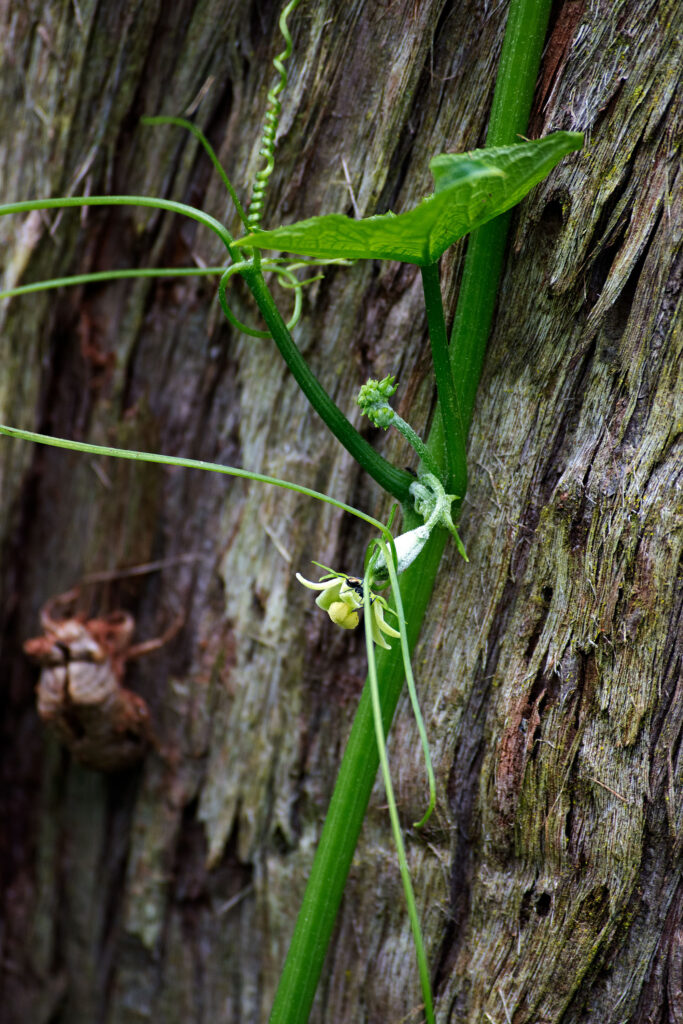
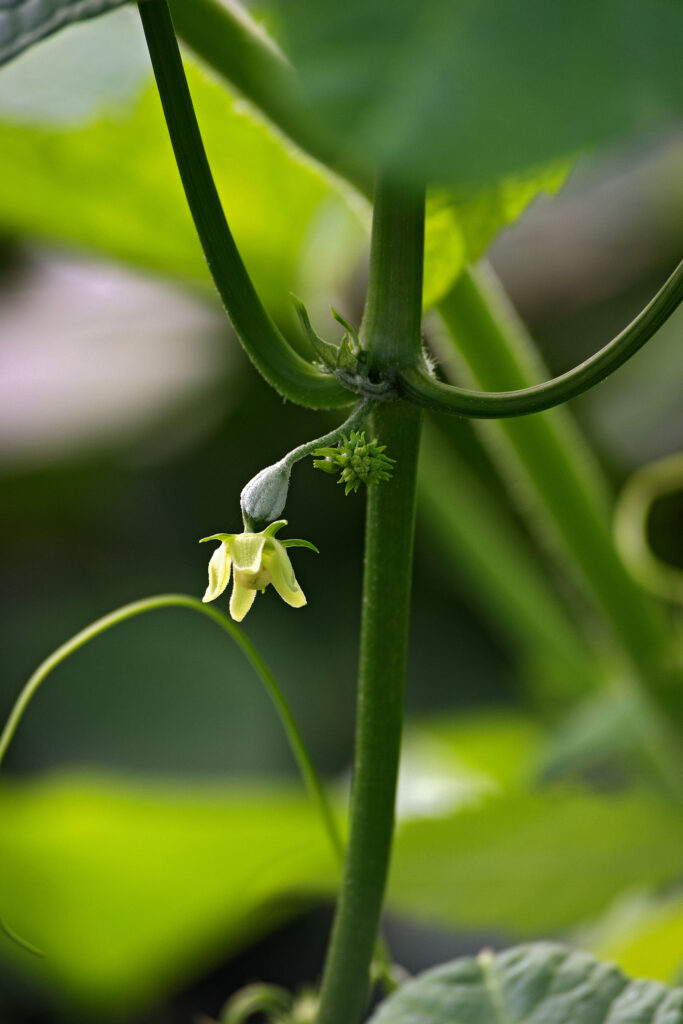
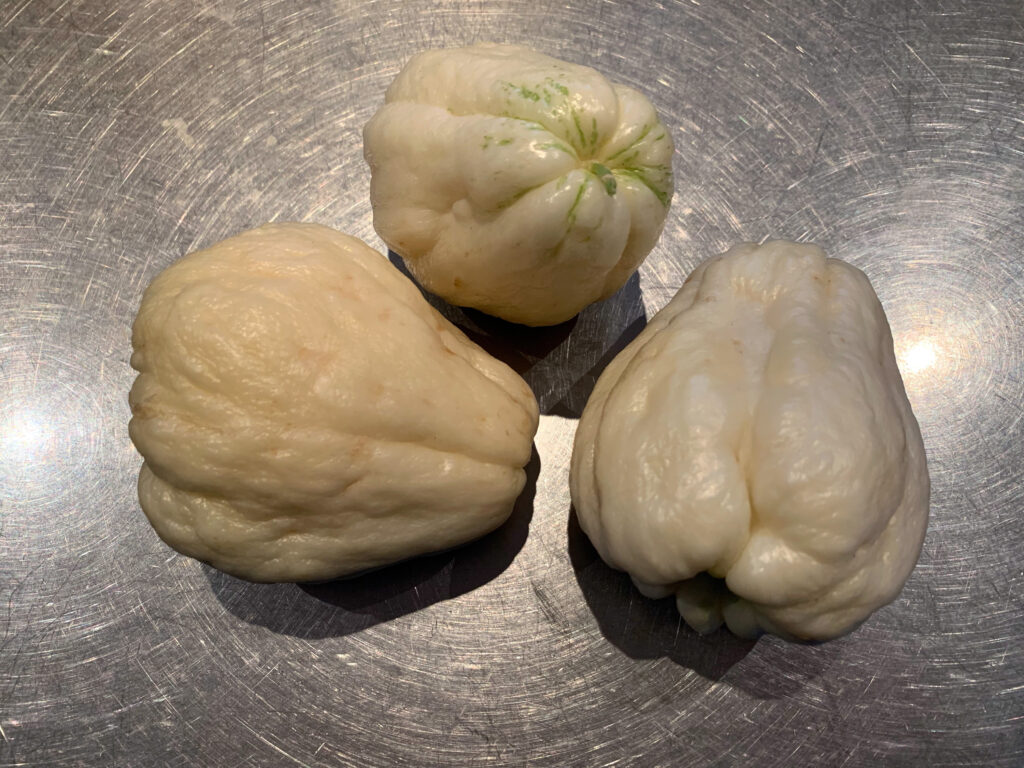
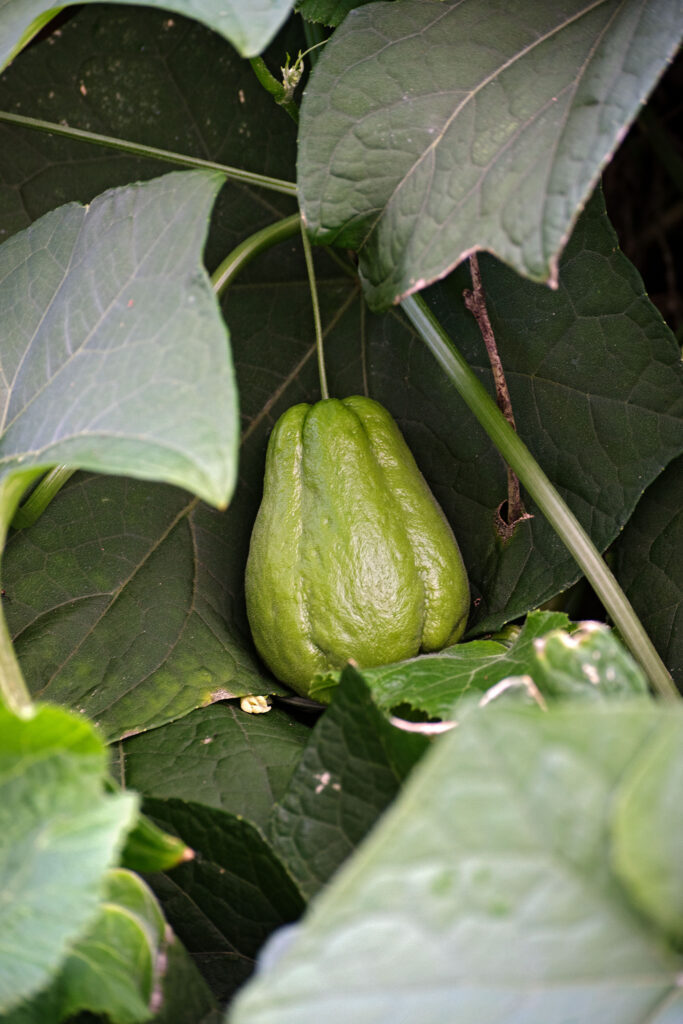
Growing for seed
Growing chokos for seed is exactly the same as growing for eating. They are frost tender and prefer warmer temperatures to thrive. They are large robust vines that need a strong support system such as a fence or trellis. In tropical or semi-tropical areas, they are perennial. In cooler areas they may be over wintered by protecting with a thick layer of mulch. They are grown as annuals in the coldest areas. They will fruit in their first growing season.
When planting the whole fruit is planted at the soil surface.
If keeping a specific variety true-to-type they need to be grown at least 250 metres from other choko varieties. The inconspicuous flowers are highly attractive to bees and other pollinators.
Selection
Chokos are available in a variety of colours and fruit shapes. It can be difficult to remove plants that produce fruit that does not match the selection criteria if they have been allowed to grow into neighbouring plants. They are such large vines that home gardeners generally find it difficult to keep them apart until selection on fruit form can be carried out. Gardeners may prefer to collect seeds for propagation in the second season and rogue out any unwanted plants after cutting the vines back over winter rather than tackling it during the current growing season.
Harvest
Fruit is harvested while still green. When mature they start to shoot while still on the parent plant. For those in cooler areas the fruits may store better if picked when full size but before they start to split and produce a shoot.
Storage
In cooler climate zones the fruit must be stored until the following warm season. To best keep the fruit, it should be stored in a cool airy location protected from frosts.
Contributors
Liz Worth, Nellie Pryke
